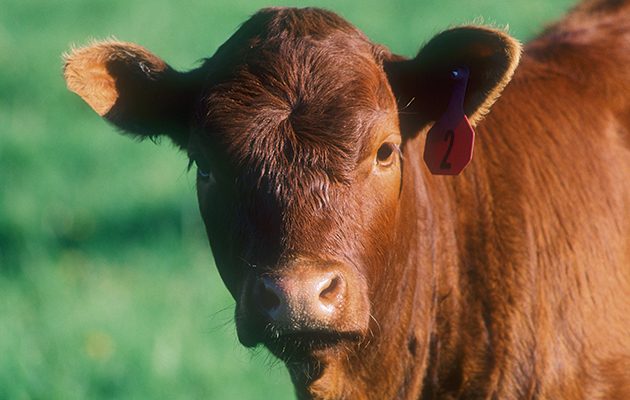Cowpats with the consistency of concrete are good for hurling contests, says Tim Field, but they may also contain a hard truth about the land beneath
Cowpats offer comedy gold with a misplaced footstep and a valuable cost saving on artificial fertiliser. But they can also tell us about the land beneath, as Tim Field explains.
For more on farming, read ploughing into the future to find out whether the mighty plough has a place in modern farming.
UNCOMPOSTABLE COWPATS
Country folk are fascinated by cowpats. There is the childish humour of seeing a misplaced footstep and splat – an inevitable sticky end. Others take great pride in competitive “pie” hurling, as seen at the Surrey Young Farmers’ Cow Pie Rally. Then again, the agronomist admires their inherent value; a daily yield of pats equates to approximately 41p in equivalent artificial fertiliser costs. Brown gold when you multiply that up for a herd over the year.
I doubt I’m alone in observing that cowpats on some farms linger longer than on others. Walking a pasture that hasn’t seen a cow for many weeks, these farms appear poxed with concrete pats, fossilised and seemingly devoid of life; solid biscuits akin to a giant oatcake.
Logic suggests cowpats hang around longer where the worms, bugs and microbes aren’t helping them to decompose. That is either because the soil beneath is devoid of life or the pats are unappetising to the detritivores in residence. The latter could be the case where dosings of anti-parasite drugs (for example, anthelmintics) are affecting the dung and hampering the efforts of flies, worms and beetles trying to do their job. While anthelmintics successfully target intestinal worms, flukes and other creatures that parasitise livestock, research has shown that these drugs can have an impact on dung decomposition in the field, too.
Irresponsible dosing with anthelmintics doesn’t end at uncompostable cowpats. Antimicrobial resistance has been a real feature in the media over the past year. While most focus is given to the misuse of antibiotics in animal and human health systems, similar principles apply to anthelmintic resistance. However, parasites remain a burden to welfare and productivity that no farmer wants to bear; anthelmintic drugs can be a precious weapon in the farmer’s armoury to sustain a healthy herd or flock. Although necessary, anthelmintics are not the only tool in the box and there are a great number of traditional and modern agro-ecological practices that can complement a medical approach to parasite management. It is important to respond to increasing resistance to anthelmintic products before it is too late. Using them wisely, only where necessary, will prolong their efficacy.
BUILDING RESILIENCE TO PARASITES
Just as we benefit from limited exposure to some nasty bacteria to build tolerance, the same can be said for building resilience to parasites. Certain breeds and individuals will handle parasites better than others, thus breeding and culling programmes must consider more than just yield. Robustness and suitability to the environment, including underlying microbial ecology, is of paramount importance.
Long before intervention with veterinary medicines began resilience was developed via more direct selective pressures. If a ewe or heifer suffered a notable burden of parasites and was not fit for breeding, she would be culled. This helped shape the diversity of native breeds suited to our land. With the abundance of pharmaceutical solutions available and 20th-century pressures of production, it wasn’t long before a stockman’s focus turned to yield, losing track of the breed’s natural suitability to thrive on the holding. In recent times, much has been made of using New Zealand’s Romney sheep and Friesian cows for reduced input, lower-intervention systems and their reinvention in the UK as premium genetics of choice. Ironically, many of these imported bloodlines were originally exported from our shores.
Closed flocks and herds also help reduce problems arriving at the farm gate, although if rams or bulls are to be brought in, a sire can be sought with traits of parasite tolerance. A period of quarantine is a safety net for any incoming stock.
As with all pests, knowledge of behaviours, life-cycles and hiding places enable stockmen to make targeted decisions. Now, a diligent stockman becomes ecologist; the microscope comes out, a faecal sample is collected, the eggs counted and parasite species identified. This procedure helps to paint a picture of animal groups and land that carry a burden, avoiding the movement of treated stock to clean pasture (thus taking resistant worms with them) and using more resilient stock to “hoover” up behind. This is complemented by other management practices, such as mixed stocking, rotational grazing and arable break crops. The use of chicory, sainfoin, plantain and a range of other bio-active species in the forage have natural anthelmintic properties and, ultimately, fit, stress-free, well-nourished animals will build better immunity.
Winter is approaching. While we look for a full moon to anticipate the arrival of our migrant woodcock, it is worth thinking about how to improve the feeding grounds of this most deserving of gamebirds. Concrete cowpats are not a good sign. Alternatively, we carry on with concrete cowpats and consider an alternative value; in some countries, the ash of burnt manure is a viable cement substitute in concrete. Personally, I would rather maintain the nutrient, ecological and comedy value of the humble cow pie.
Follow Tim and Agricology @agricology





